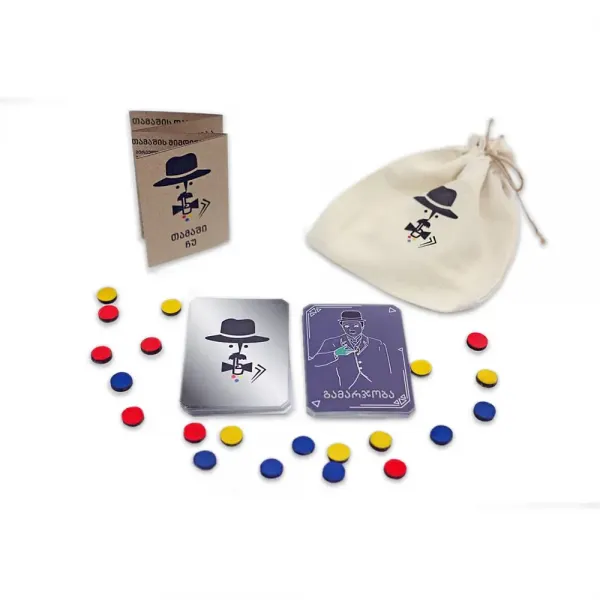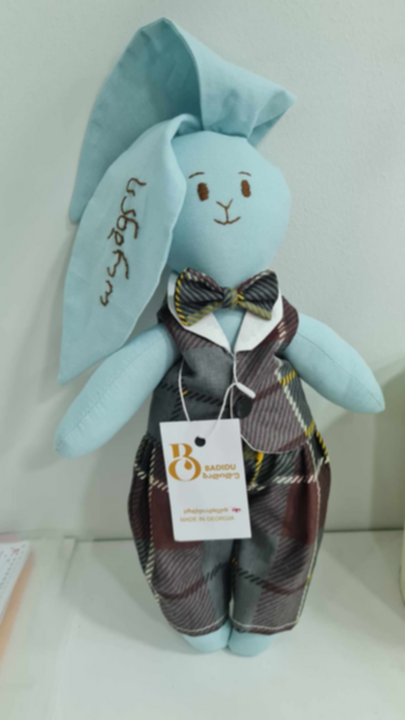Toys
Comble
Comble is a different, cognitive and eco-friendly product focused on the development of psycho-emotional and motor skills, improving communication between parents and children. Along with the toy, a fairy tale is presented in Georgian and English. In addition, children can play, reinvent history, organize different game adventures, invent new names for them, play different or well-known stories. All this is designed to stimulate the child's imagination. All wooden toys are of high quality, natural wood material - beech and environmentally friendly paints that do not contain heavy metals and comply with European toy safety standards are used in production. Made to order: in 3 days
22.22
Three Pigs
Three Pigs is a different, cognitive and eco-friendly product focused on the development of psycho-emotional and motor skills, improving communication between parents and children. Along with the toy, a fairy tale is presented in Georgian and English. In addition, children can play, reinvent history, organize different game adventures, invent new names for them, play different or well-known stories. All this is designed to stimulate the child's imagination. All wooden toys are of high quality, natural wood material - beech and environmentally friendly paints that do not contain heavy metals and comply with European toy safety standards are used in production. Made to order: in 3 days
22.22
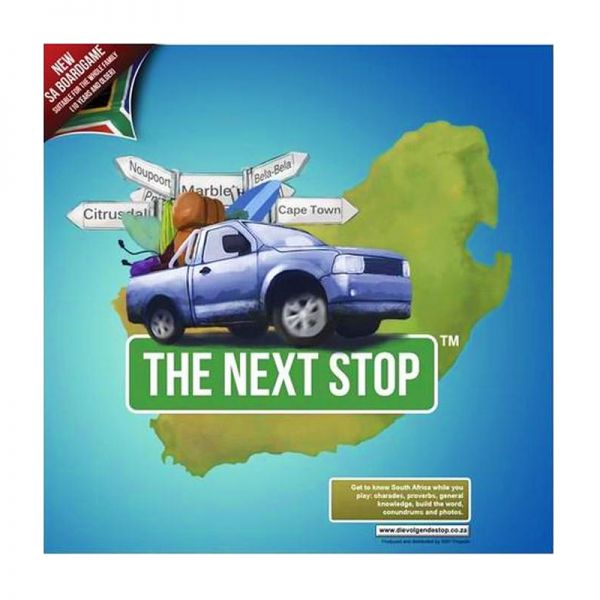
Board game The Next Stop
The Next Stop is Educational Board Game about South Africa. It is a unique family board game that will enhance your children’s general knowledge about South Africa. It’s ideal to go along with our Footprints On Our Land programme for ages 7 and up as kids love to play and learn or learn and play! Essentially, The Next Stop it is a timed quiz game – but it is a quiz with a difference, as it not only includes question cards that will test your knowledge on South African plants, animals, places and things to do, but it also includes ‘identify the photo’ cards as well as ‘build the word’, charades and idioms (so that covers some Language Arts) too! Your kids will also love spending time with you, testing their genius and competing with other teams. At the same time, they will be developing socio-emotional skills such at team work, turn-taking, verbal communication skills, reading skills, good sportsmanship, obeying rules and more. The game is played by teams of at least two and requires a minimum of 4 players, ideally aged 10 and up, but being homeschoolers, we have a wide range of smart kids in our homes! Our 7 year old pairs up with a parent or older sibling and enjoys participating in the game too. As long as someone in the team can read, all ages can join in the fun! Younger children can operate the timer or move the playing pieces on the board. A maximum of 6 teams can play. There is no dice, teams simply take turns answering questions within 30 seconds, timed by an egg timer and moving their car playing piece each time they answer correctly. Instead of moving around a random route on a board, in The Next Stop, the board is a map of South Africa with various cities and places of interest marked on it (that’s Geography). You start with your team’s car playing piece at a South African city and follow one of 6 routes passing through 10 other towns, ‘dorpies’ or cities each, to the end of your route. Each time you answer a question correctly, your car moves to ‘the next stop’ on your route. The first team to reach the end of their route is the winning team. With 300 playing cards, you are ensured of many hours of entertainment, laughter and learning in a relaxing, relationship-building format. Age: 7+ Number of players: 4-12
18.51
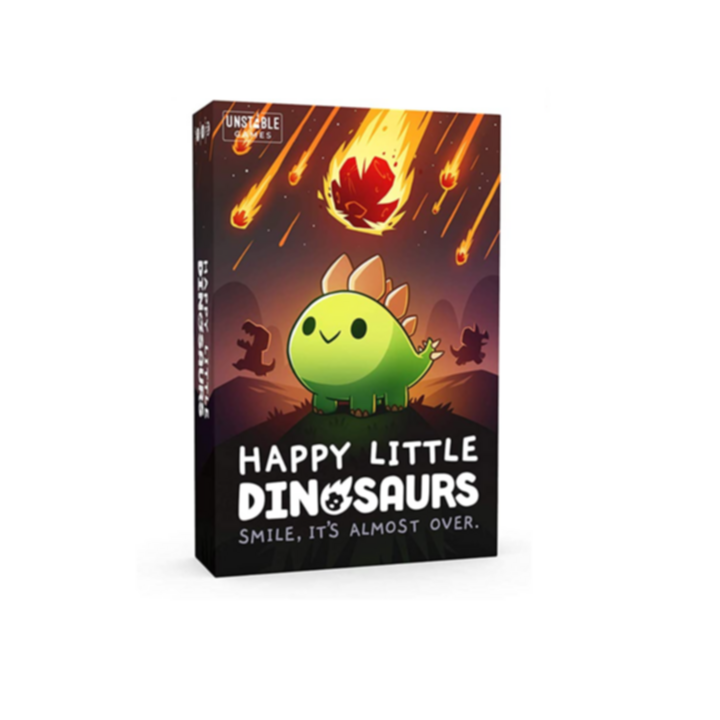
Board game Happy Little Dinosaurs
Lately, it feels like we’re all just dinosaurs trying to avoid the falling meteors. In this game, you’ll try to dodge all of life’s little disasters. You might fall into a pit of hot lava or get ghosted by your dino date, but the dino who survives it all wins the game! In Happy Little Dinosaurs, the first person to reach 50 points, or be the last Dinosaur standing, wins the game! During each round, you’ll flip a Disaster card featuring a Natural, Predatory, or Emotional disaster. Each player will play a Point card in hopes of collecting points and avoiding the disaster. You will work to avoid all of life’s little disasters and laugh as they happen to your friends. If you collect 3 Disaster cards of the same type OR 3 different types of Disaster cards, you will be out of the game. Point cards feature weapons, trinkets, and good luck charms that you use to collect points and avoid disasters. Each card has a point value between 0 and 9 that you will use when scoring a round. You can use Instant cards at different points during the game to tip the odds in your favor or save your Dinosaur from certain death. Player boards include your Dinosaur’s traits, an Escape Route you use to track your score, and a Disaster Area where you will collect Disaster cards. You’ll move your Dinosaur meeple along the Excape Route on your player board to track your score. Will you successfully dodge the disasters or get eaten by a prehistoric whale? Only the cards can decide. Age: 8+ Number of players: 2-4
29.62

Board game Dobble
Each card in original Spot it! features eight different symbols, with the symbols varying in size from one card to the next. Any two cards have exactly one symbol in common. For the basic Spot it! game, reveal one card, then another. Whoever spots the symbol in common on both cards claims the first card, then another card is revealed for players to search, and so on. Whoever has collected the most cards when the 55-card deck runs out wins! Rules for different games – each an observation game with a speed element – are included with Spot it!, with the first player to find a match either gaining or getting rid of a card. Multiple versions of Spot it! have been published, with images in each version ranging from Halloween to hockey to baseball to San Francisco. The game is sold as Spot it! in the USA and Dobble in Europe, with slight differences between the two editions. Age: 7+ Number of players: 2-8
12.96
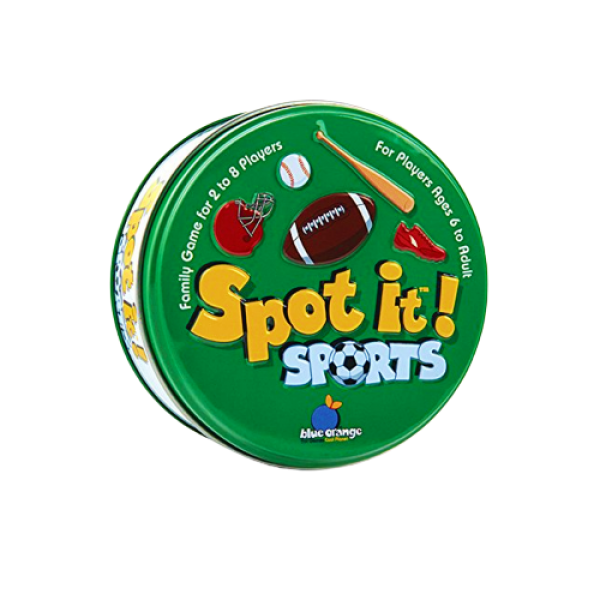
Board game Spot it! Sports
This travel-sized game keeps kids on the lookout for matching creatures of the land, sky and sea. As in the original Spot It! game, there is always one-and only one-matching symbol between any two cards. Be first to spot it to win! Includes 31 cards. Age: 4+ Number of players: 2-8
12.96
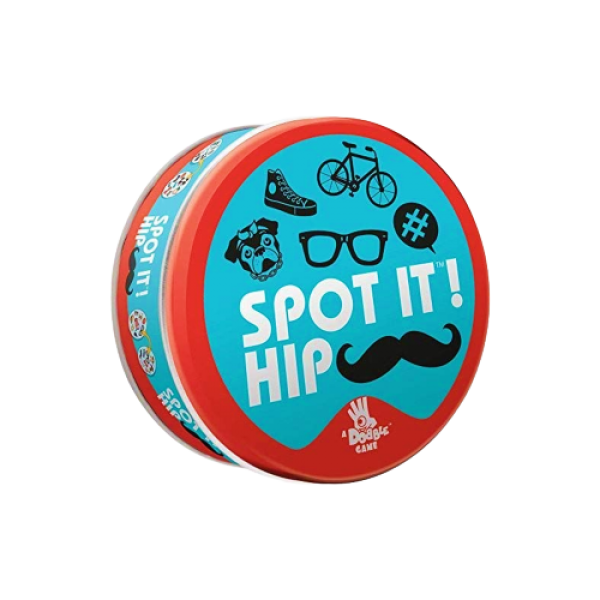
Board game Spot it! HIP
This travel-sized game keeps kids on the lookout for matching creatures of the land, sky and sea. As in the original Spot It! game, there is always one-and only one-matching symbol between any two cards. Be first to spot it to win! Includes 31 cards. Age: 4+ Number of players: 2-8
12.96
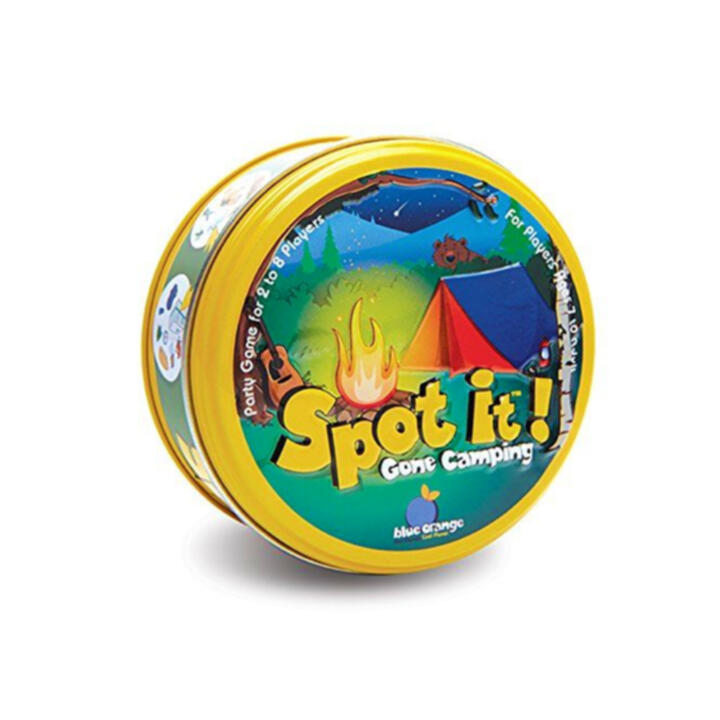
Board game Spot it! Gone Camping
This travel-sized game keeps kids on the lookout for matching creatures of the land, sky and sea. As in the original Spot It! game, there is always one-and only one-matching symbol between any two cards. Be first to spot it to win! Includes 31 cards. Age: 4+ Number of players: 2-8
12.96
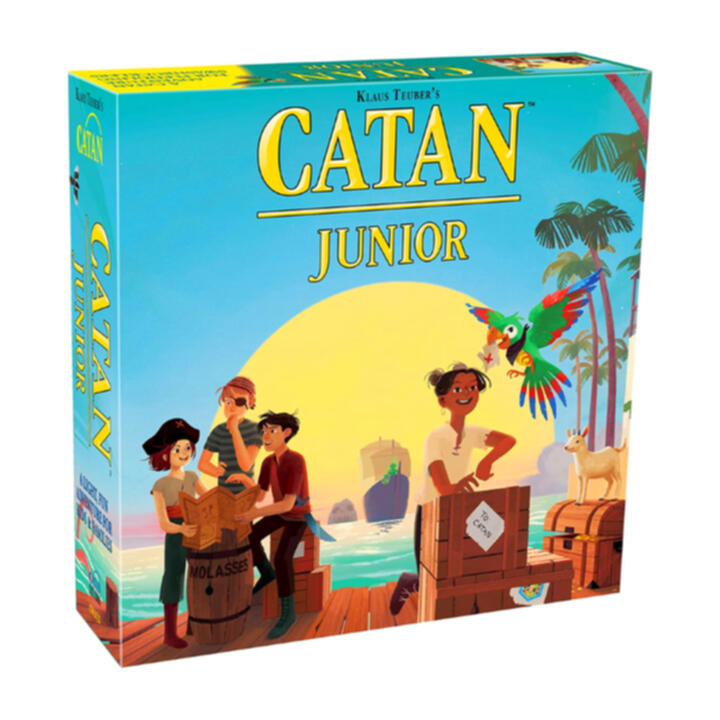
Board game Catan Junior
Explore the seas! Catan: Junior introduces a modified playing style of the classic Settlers of Catan, giving players as young as five a perfect introduction to the Catan series of games. Catan: Junior takes place on a ring of islands where 2 to 4 players build hideouts and encounter the mysterious Spooky Island, where the Ghost Captain lives. Each island generates a specific resource: wood, goats, molasses or swords, and players can acquire gold. Each player starts with two pirate hideouts on different islands, and they can use the resources they acquire to build ships, hideouts or get help from Coco the Parrot. By building ships, they can expand their network; the more hideouts they build, the more resources they may receive. Just watch out for the dreaded Ghost Captain! Be the first player to control seven pirate hideouts, and you win! Age: 6+ Number of players: 2-4
14.81
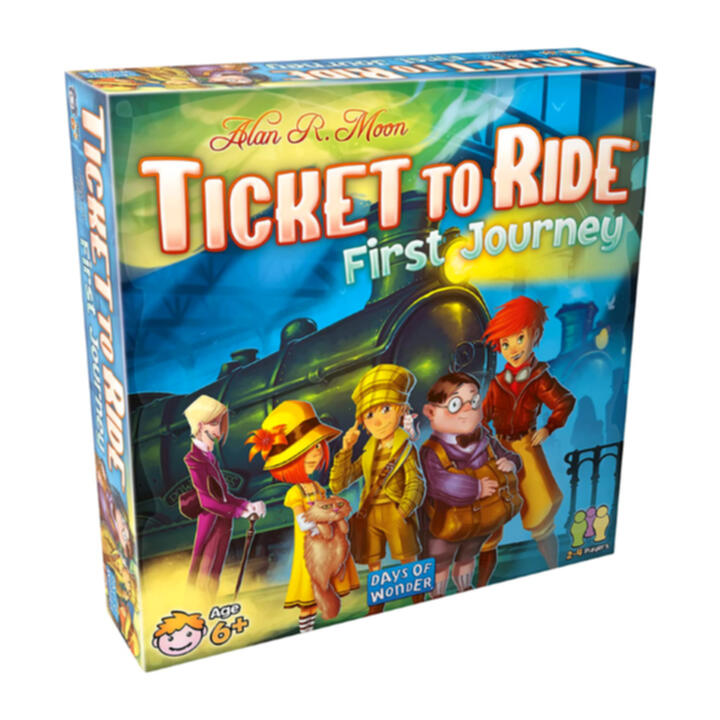
Board game Ticket to Ride First Journey
Ticket to Ride: First Journey takes the gameplay of the Ticket to Ride series and scales it down for a younger audience. In general, players collect train cards, claim routes on the map, and try to connect the cities shown on their tickets. In more detail, the game board shows a map of the United States with certain cities being connected by colored paths. Each player starts with four colored train cards in hand and two tickets; each ticket shows two cities, and you’re trying to connect those two cities with a contiguous path of your trains in order to complete the ticket. On a turn, you either draw two train cards from the deck or discard train cards to claim a route between two cities; for this latter option, you must discard cards matching the color and number of spaces on that route (e.g., two yellow cards for a yellow route that’s two spaces long). If you connect the two cities shown on a ticket with a path of your trains, reveal the ticket, place it face up in front of you, then draw a new ticket. (If you can’t connect cities on either ticket because the paths are blocked, you can take your entire turn to discard those tickets and draw two new ones.) If you connect one of the West Coast cities to one of the East Coast cities with a path of your trains, you immediately claim a Coast-to-Coast ticket. The first player to complete six tickets wins! Alternatively, if someone has placed all twenty of their trains on the game board, then whoever has completed the most tickets wins! Age: 6+ Number of players: 2-4
14.81

Board game Speed Cups
Haim Shafir’s most famous game design, Halli Galli, includes one of the best-known game props in existence: a bell. Players both young and old love to hit the bell after spotting a winning combination, so it’s no surprise to see the bell return in yet another Shafir design: Speed Cups, a.k.a. Quick Cups. In this game, each player receives a set of five plastic cups, each a different color; a deck of 24 cards is shuffled and placed face down in the center of the table next to the bell. One player flips over the top card, which depicts colored objects – trains, birds, cups, etc. – stacked vertically or horizontally, then everyone tries to recreate this colored sequence with her own set of cups. The first player to do slams the bell, revels in the soul-brightening “ding”, then (if correct), claims the card. Someone then reveals the next card, and the players start shuffling cups once again. Age: 4+ Number of players: 2-6
14.81
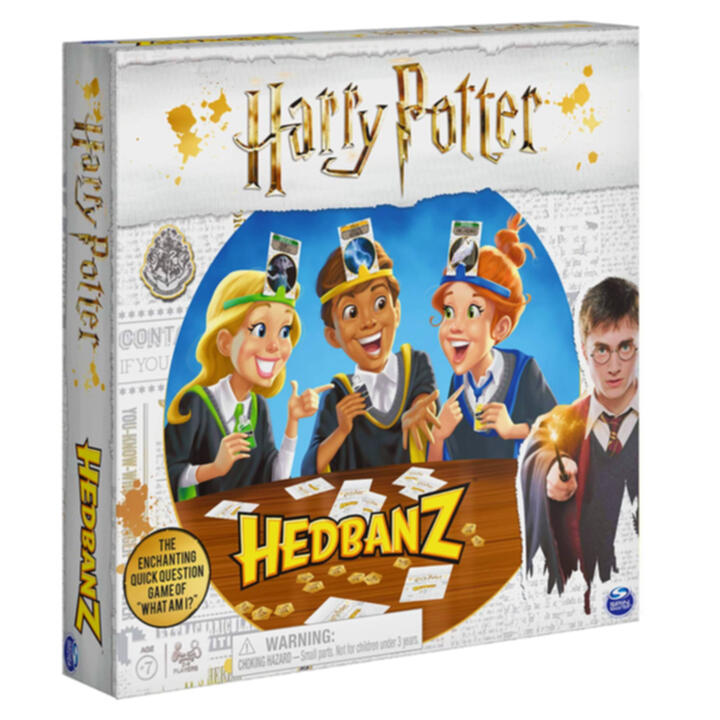
Board game Hedbanz Harry Potter
Muggles: test your knowledge of all things Harry Potter with this hilarious HedBanz party game. The magic begins when players stick cards into their HedBanz, and take turns guessing what’s on their cards by asking yes or no questions. Since all is not as it seems in the world of Hogwarts, pick up a potion token to change everything. Depending on the token, you may have to act out, rhyme or describe a clue. Guess your card correctly and receive a chocolate frog token. The first players to five chocolate frog tokens wins. Have you brushed up on your spells, then Accio Harry Potter HedBanz. How well do you know Harry Potter? Find out with Harry Potter HedBanz! In this magical party game, players put their knowledge of Hogwarts to the test! Players take turns guessing what’s on their card by asking “yes” or “no” questions. Each correct guess earns one chocolate frog token. Collect 5 and win! Harry Potter HedBanz is a non-stop fun quick question game. Whether you represent Gryffindor, Ravenclaw, Slytherin or Hufflepuff, anyone can play! Age: 7+ Number of players: 2-6
14.81
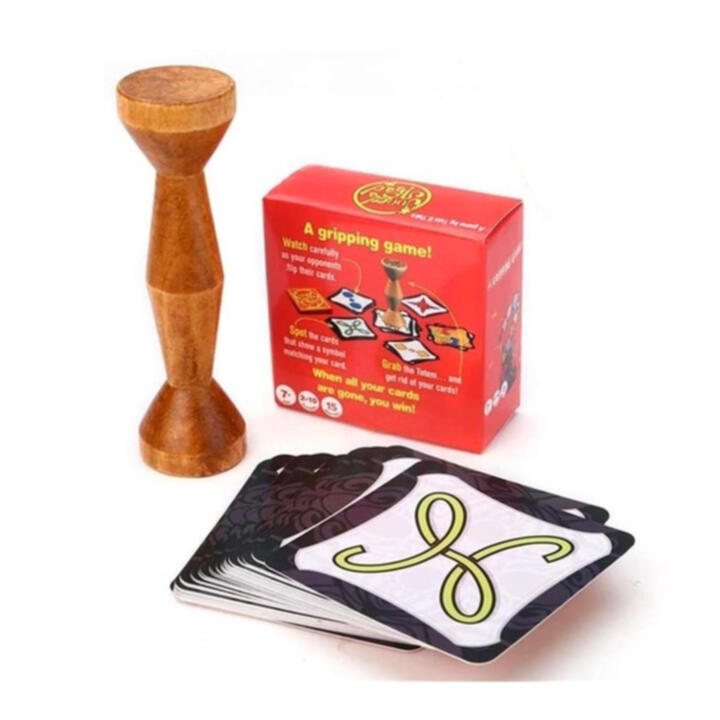
Board game Jungle Speed
The game Jungle Speed was created about 3000 years ago by the Abulous tribe. They used Eucalyptus leaves instead of cards and settled all kinds of disputes through this game. Due to the fact that all the leaves were similar to each other, in most cases the game grew into a bloody confrontation. This small flaw led the tribe to extinction, and it was the reason why the game Jungle Speed became known to the world only in the twentieth century. In Jungle Speed, players take turns flipping cards and if an identical symbol appears, they try to be the first to claim the totem in the middle of the table. In the basic case, the color of the cards does not matter, and you only observe the similar symbol, unless the special card ("Color Match") is active. There are 80 cards in the game, which may look very similar but are not identical. Be careful, even a slight touch on the totem at the wrong time will cost you dearly. Jungle Speed is played with one hand, it is necessary to take the totem with the same hand with which you flip the cards. The object of the game is to get rid of all the cards in your deck. The winner is the player who can do it the fastest. Age: 7+ Number of players: 2-10
18.51
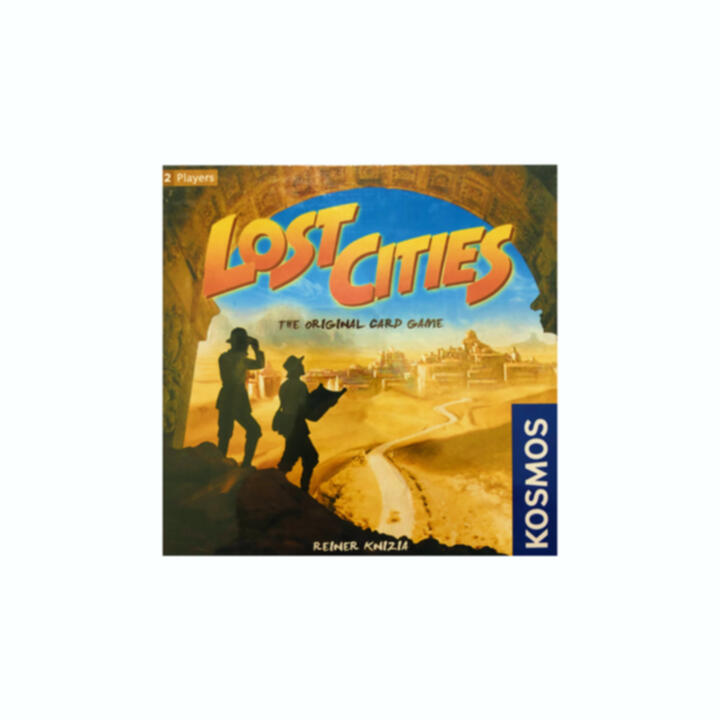
Board game Lost Cities
Fairytale heroes come from different people to march against the Dark Lord and his minions. If the god-man Amiran, driven mad by the darkness, tears open the door of Tartarus, eternal misery will set in the world of the living. Whether the tall Medea, the brave Comble, the shrewd Pentacle, and the invincible Skyscraper will be able to defeat the Assyrians, it's up to you!! Age: 10+ Number of players: 1-4
18.51
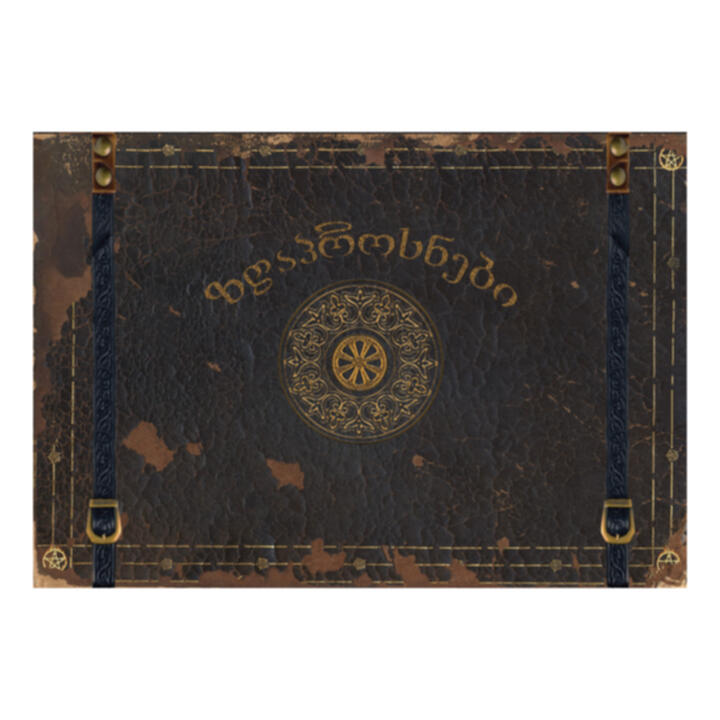
Board game fairy tales
Fairytale heroes come from different people to march against the Dark Lord and his minions. If the god-man Amiran, driven mad by the darkness, tears open the door of Tartarus, eternal misery will set in the world of the living. Whether the tall Medea, the brave Comble, the shrewd Pentacle, and the invincible Skyscraper will be able to defeat the Assyrians, it's up to you!! Age: 10+ Number of players: 1-4
74.07
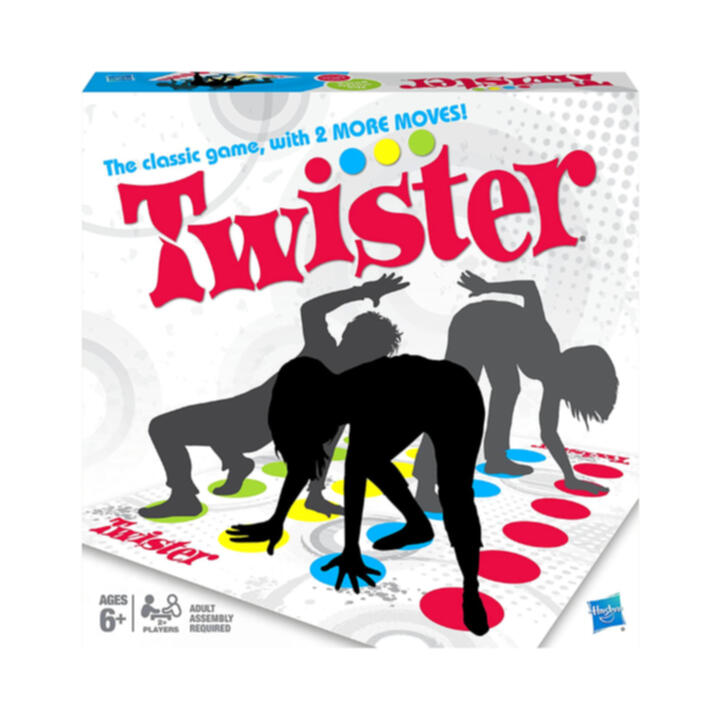
Board game Twister
A large vinyl playing mat is placed on the floor, with a 6 x 4 array of spots, each spot about 6 inches in diameter. The spots are colored red, blue, yellow, and green. A player is chosen to moderate, and the rest of the players, up to 4, stand on the play mat with their feet on different spots. Each turn consists of the moderator spinning a spinner, which gives a result matching a random color with a random element from the set (left hand, right hand, left foot, right foot). Each player must put the relevant bodypart on the relevant color spot. If the bodypart is already on a spot of that color it is moved to another spot of the same color. No two players bodyparts can share the same spot. If a player falls or touches an elbow or knee to the ground they are eliminated Age: 6+ Number of players: 2+
14.81
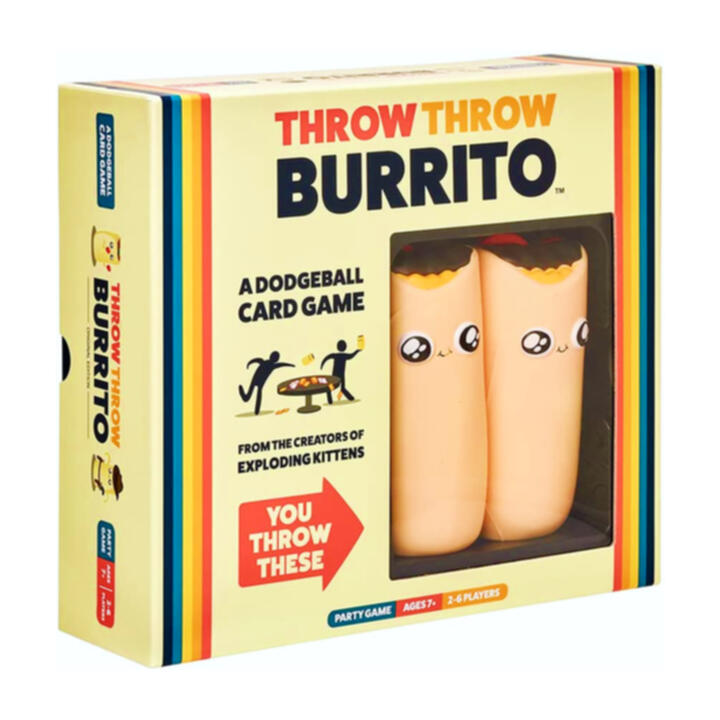
Board game Throw Throw Burrito
The world’s first dodgeball card game. Collect cards. Play your hand. Throw things at your friends. Throw Throw Burrito is what you get when you cross a card game with dodgeball. Try to collect matching sets of cards faster than your opponents while simultaneously ducking, dodging, and throwing squishy airborne burritos. The cards you collect earn points, but getting hit by flying burritos loses them. So clear some space and put away the antiques, because you’ve never played a card game quite like this before. How it works: Place a pair of burritos on a table and draw cards. Keep your cards a secret. Rack up points by finding sets of three in the deck. Find matches before anyone else does. If someone plays Burrito Cards, a Battle ensues. Steal points from your opponents by hitting them with squishy toy burritos. Declare war on your friends. Some battles only involve a handful of players. Others force the entire table to engage in a Burrito War. Duel to determine the winner. During a Burrito Duel, two players must stand back to back, walk three paces, and FIRE. Age: 7+ Number of players: 2-6
44.44
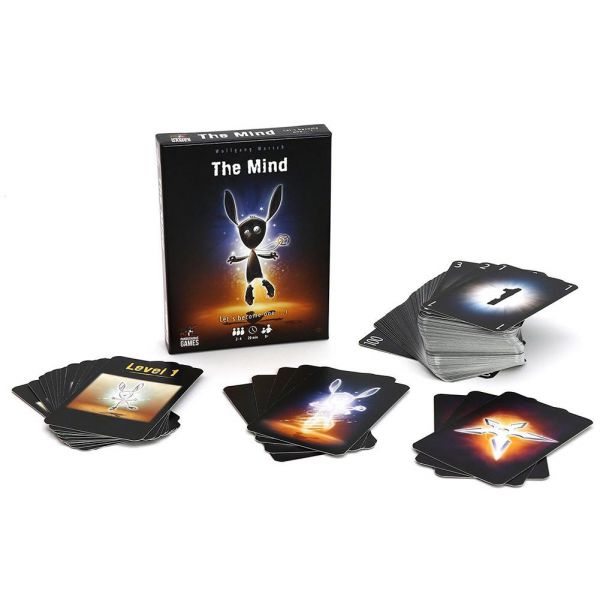
Board game The Mind
The Mind Extreme functions like The Mind, with players trying to play cards from their hand in ascending order — without consulting one another! — so that they can complete a certain number of levels and win. The higher the level, the more cards you have in hand, giving you more to juggle, but also more information to use during play. The Mind Extreme offers a more complex challenge as now instead of a deck of cards from 1-100, you have two decks each numbered 1-50. Now you’ll have two discard piles in play, with cards from one deck needing to be played in ascending order and cards from the other being played in descending order. What’s more, some levels must be played blind — that is, with the cards discarded face down so that no one sees what you’ve played. Can all players get in the right groove and discard everything in the proper order? Age: 8+ Number of players: 2-4
12.96
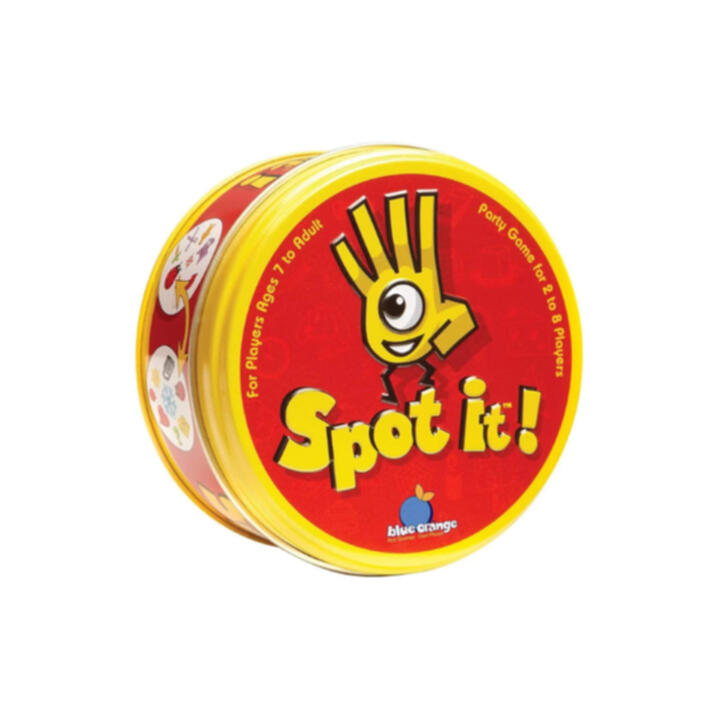
Board game Spot it!
Spot it!, a.k.a. Dobble, is a simple pattern recognition game in which players try to find an image shown on two cards. Each card in original Spot it! features eight different symbols, with the symbols varying in size from one card to the next. Any two cards have exactly one symbol in common. For the basic Spot it! game, reveal one card, then another. Whoever spots the symbol in common on both cards claims the first card, then another card is revealed for players to search, and so on. Whoever has collected the most cards when the 55-card deck runs out wins! Rules for different games – each an observation game with a speed element – are included with Spot it!, with the first player to find a match either gaining or getting rid of a card. Multiple versions of Spot it! have been published, with images in each version ranging from Halloween to hockey to baseball to San Francisco. The game is sold as Spot it! in the USA and Dobble in Europe, with slight differences between the two editions. Age: 7+ Number of players: 2-8
12.96

Board game Skyjo Action
New version of Skyjo which adds Action Cards and Joker Cards. In Skyjo, each player 12 cards in a 3×4 pattern, two of them face up, all others hidden. On your turn you can take the top card from the discard or draw pile. You can exchange one card (hidden or open) from your display with it or discard the drawn card to turn one card face up. The round ends when one player has only open cards. All cards will be revealed, and the points added for each player (Cards are ranked from -2 to 12). The game ends when one player reaches 100 points or more. Whoever has the lowest score wins. The trick is: Whenever one column of 3 cards all have the same value, the whole column is dicarded, so if you are feeling lucky, you can try to collect sets of high cards (which everyone else will likely discard, so you can take them from the discard pile). Skyjo Action adds (as the name suggests) Action Cards, which allow for special moves: Exchange cards in your tableu, Exchange cards between players, Steal an action card, Take two turns in a row etc. You get an action card whenever you put or reveal a Joker in your tableau, or you can take an Action Card instead of a normal move. Jokers allow for easier set collection and make very valuable sets in themselves (-10 or -15 points). As a new rule, rows of identical cards are now also discarded. Age: 8+ Number of players: 2-8
18.51
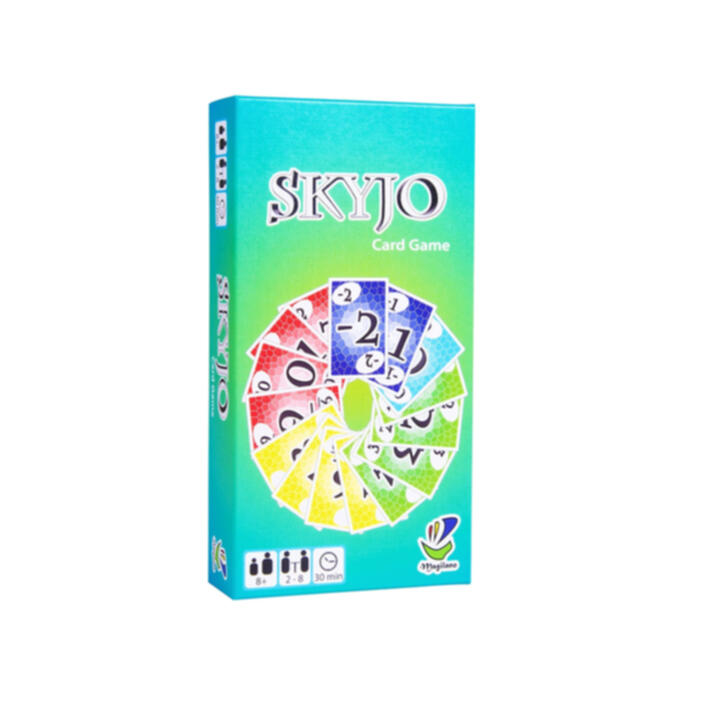
Board game Skyjo
SKYJO – This is the name of the new and exciting game from the publisher Magilano, promising fun and entertainment for many evenings to come. In card game SKYJO the goal is to collect as few points as possible over the course of several turns as after every round every player’s points are counted and added to his score. As soon as a player reaches 100 points or more the player with the fewest points wins. Collecting the fewest points means to look for low or even negative numbers. Further excitement is added by several special rules, which for example make it possible to remove several cards (and with it points) from the game – this can lead to unexpected turns. This motivates daring decisions that might even come back to bite, if the other players can counter faster than expected. What is needed to play? Enough space for 12 cards in front of each player. A positive side effect: When playing, your hands are free, so you can count points or eat snacks. As the game rules are quite easy, small talk during your turns is no problem. Recommendation: ● Suitable as family, adult, kids, travel and holiday game as well as birthday present and easter gift ● At least two players or more, the more players the more fun the game is ● Especially suited for children: Educational Gaming: Train arithmetic and concentration skills No directly competitive game: Every player plays for himself and there is no way to directly “harm” other players Hands free: The cards stay on the table and do not need to kept in one’s hands Age: 8+ Number of players: 2-8
18.51
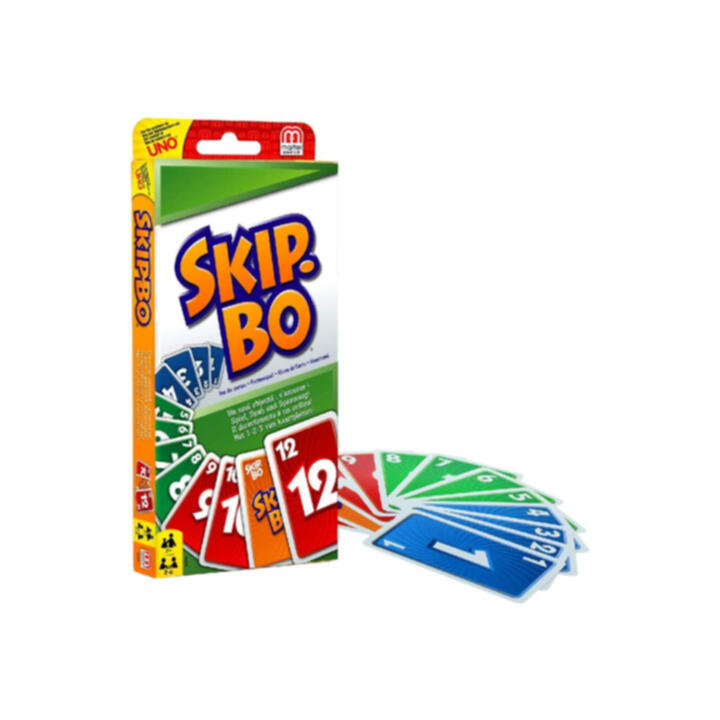
Board game Skip Bo
Each player is dealt a stockpile of 30 cards. The winner will be whoever manages to empty their stockpile first. Cards are played onto four shared building piles in numerical sequence from 1 to 12. On each turn, a player draws until they have five cards in their hand, and then plays cards from: their hand, a top card of their discard piles, or their stockpile. At the end of their turn, a player must discard onto one of their four personal discard piles. Strategy involves the organizing of cards into the discard piles, care in not setting up the next players for good plays, knowing when to play from which option, and especially the timing of playing a valuable “Skip-bo” wildcard. Age: 7+ Number of players: 2-6
7.4

